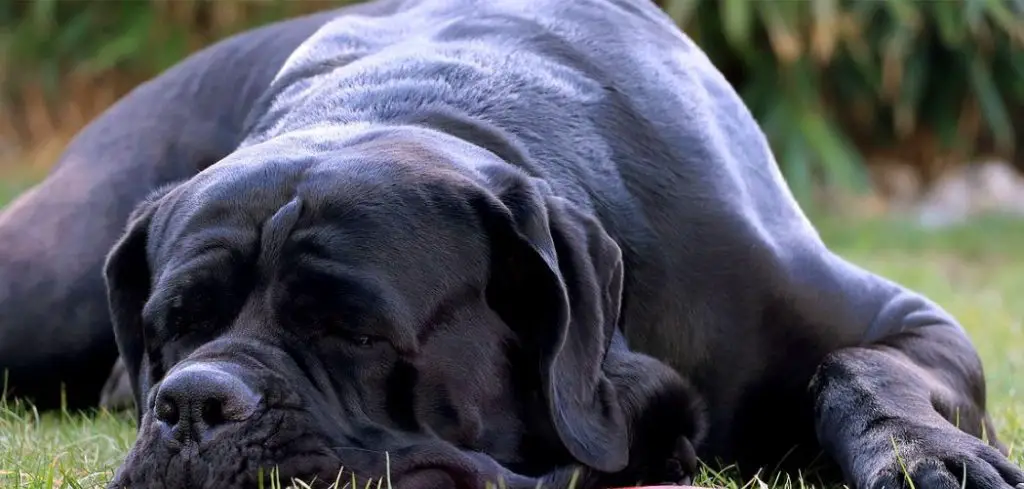Seeing your dog pant and breathe shallowly can be unsettling, especially if it seems to happen out of nowhere. Panting is a normal behavior in dogs, but when it’s paired with shallow breathing, it can point to a more serious issue. These symptoms may be signs of pain, respiratory distress, or systemic illness.
We outline the common causes of dog panting and shallow breathing, what you can do at home, and when to seek veterinary help.
when to seek veterinary help.
Why Is My Dog Panting and Breathing Shallow? — Why It Happens
Dogs pant and breathe shallowly when they’re overheated, in pain, anxious, or experiencing a respiratory or cardiovascular issue. Shallow breaths may mean your dog isn’t getting enough oxygen, and panting is their way of trying to regulate temperature or compensate for a problem.

Common Causes of Dog Panting and Shallow Breathing
Overheating or Heatstroke
If your dog is panting heavily and taking shallow breaths after playing or being in a hot environment, they may be overheating.
Dogs cool themselves by panting. Shallow breathing can occur when they’re struggling to bring their temperature down.
Heatstroke is an emergency and may also present with drooling, red gums, vomiting, or collapse.
Read more: Dog Panting and Not Eating (When to worry)
Pain or Discomfort
Pain causes stress in dogs, which can lead to rapid, shallow breathing and panting.
Dogs in pain from injuries, dental problems, or internal issues may breathe faster and more shallowly.
Look for additional clues like limping, restlessness, or avoidance of touch.
Respiratory Conditions
Issues with the lungs or airways can cause panting and shallow breathing due to impaired oxygen exchange.
Conditions like pneumonia, bronchitis, or laryngeal paralysis are common culprits.
Coughing, nasal discharge, or wheezing often accompany these symptoms.
Heart Disease
Dogs with heart problems may struggle to get enough oxygen, leading to panting and shallow, fast breathing.
Heart failure can cause fluid to build up in the lungs, making breathing difficult.
Other signs include fatigue, coughing, or bluish gums.
Stress or Anxiety
When a dog is scared or anxious, their breathing becomes rapid and shallow, and they may start panting excessively.
Thunderstorms, car rides, vet visits, or separation anxiety can all trigger this reaction.
Pacing, trembling, and hiding often go hand-in-hand with stress-induced panting.
Anemia or Blood Loss
If your dog is not getting enough oxygen due to anemia (low red blood cells), they may breathe rapidly and shallowly to compensate.
Causes include internal bleeding, parasites, or chronic illness.
Gums may appear pale or white instead of healthy pink.
What to Do If Your Dog Is Panting and Breathing Shallowly
Start by assessing your dog’s environment—are they overheated, anxious, or recently active?
Move them to a cool, quiet place and monitor their breathing. Offer water if they’re alert and responsive. Avoid exertion and keep them calm.
Watch for accompanying signs like coughing, collapse, or gum color changes.
If symptoms last more than a few minutes or worsen, contact your vet immediately.
When to Call or Visit Your Vet
Seek veterinary help if your dog:
Is breathing shallowly for more than 10 minutes
Pants excessively at rest or in cool conditions
Has blue, pale, or gray gums
Is lethargic or unresponsive
Has a history of heart or respiratory problems
A vet may perform chest X-rays, blood tests, or oxygen saturation checks to diagnose the cause.
Read more: Dog Panting and Choking (Here’s why)
Key Takeaway
Panting combined with shallow breathing is more than just normal dog behavior—it could be a sign of distress, illness, or heat-related emergency. Acting quickly can make all the difference, so monitor your dog closely and reach out to your vet when in doubt.
With prompt attention, most underlying causes can be managed effectively, helping your dog breathe easy again.
